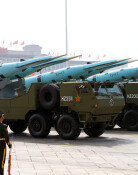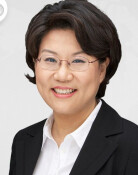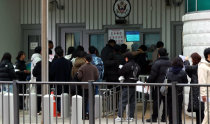Smaller Funds Top Earnings Performance in 1st Half
Smaller Funds Top Earnings Performance in 1st Half
Posted June. 26, 2009 07:31,
Ten funds that saw the highest earning rates in this years first half are not large-scale funds, with each drawing less than 60 billion won (46.5 million U.S. dollars).
Among funds with small investments, the ones earning a hefty profit include those investing in information technology and car manufacturing, whose shares have soared since early this year, and stocks whose prices are not prohibitive.
Among equity-type funds investing in domestic stocks, MyAssets My Triple Star Security Investment and Trust C/A had the highest earning rate. It recorded an earning rate of a whopping 89.28 percent in the first half, surpassing other fund products by more than 10 percentage points.
The amount of money invested into the fund was just a billion won (775,494 dollars) early this year. As the fund has yielded high profit by investing into small stocks or initial public offerings since early this year, however, it has grown to more than 10 billion won (7.75 million dollars).
The funds lead manager Han Sang-su said, Ive been able to generate much profit since I invested 5-10 percent of the assets into promising companies such as LG Chem and Songwon Industrial instead of considering market capitalization.
On the other hand, popular funds that drew more than a trillion won (775.5 million dollars) have either grown in parallel with the Korean benchmark stock index KOSPI or shown a poorer performance. In the first half of the year, the earning rate of nine of 17 funds drawing more than a trillion won (775.5 million dollars) was lower than the KOSPIs growth rate of 24.42 percent.
For example, the earning rate of Mirae Assets K-1 Project to Invest in Good Stocks to Generate 300 Million Won (232,648 dollars) was just 13.21 percent over the same period.
Kim Hu-jeong, a researcher at Tong Yang Securities, said, Until April, large-scale funds heavily investing in blue chip stocks showed a poor performance since smaller funds investing in growth concept stocks saw higher growth. Since May, however, large-scale funds have shown a good performance due to a stock market adjustment.
In short, it isnt a good strategy to consider the short-term earning rate as the yardstick and to sell large-scale funds and buy smaller ones.
○ Return of BRIC funds
The stock markets of Brazil, Russia, India and China, or BRIC, have drastically recovered since late last year, so equity-type funds investing into these four markets have seen robust growth. Nine of the 10 most profitable overseas equity-type funds are investing in the four nations.
Unlike stock markets in advanced economies such as the U.S. and Europe, emerging economies have grown rapidly and have fully recovered from the sluggish performance in the wake of the global financial crisis.
Mirae Asset Global Investments Mirae Asset Investment into Indias Infra Sector Stocks has the countrys highest earning rate of 82 percent and "Mirae Asset Investment into Brazils Blue Chip Stocks is second with 72 percent. On the other hand, funds investing in Japan and Europe have shown a worse-than-expected performance with earning rates of 0.34 and 0.72 percent, respectively.
Among funds investing in the BRIC economies, those investing in India and Russia have grown dramatically. Fund experts recommended that investors reduce the share of Indian stocks in their portfolios after last years terrorist attack in Mumbai. Indias stock market has kept skyrocketing, however, and has surged around 17 percent daily since the countrys general elections last month.
In Russia, surging international oil prices have boosted the stock market there. As the countrys RTS index collapsed early this year to 400 points, investors in droves sold their funds exposed to Russian stocks. As the index has recovered to the 1,100 level, Russian funds are drawing tens of billions of won in investment each week.
As more investors pour their money into BRIC funds, fear is rising that too much money will flow into emerging economies like it did in 2007.
Lee Gye-ung, fund research team leader at Good Morning Shinhan Securities in Seoul, said, Too much investment has recently flowed into BRIC. Its a matter of grave concern. Its inappropriate to make new investments into those markets since their stock markets could decline depending on the performance of the global market.
baltika7@donga.com



![화장실 갇혔을 때 생존법…“최후에는 변기뚜껑” [알쓸톡]](https://dimg.donga.com/c/138/175/90/1/wps/NEWS/IMAGE/2025/12/26/133042007.3.png)
![[속보]李, 초대 기획예산처 장관에 ‘국힘 3선’ 이혜훈 파격 발탁](https://dimg.donga.com/c/138/175/90/1/wps/NEWS/IMAGE/2025/12/28/133048722.1.png)


